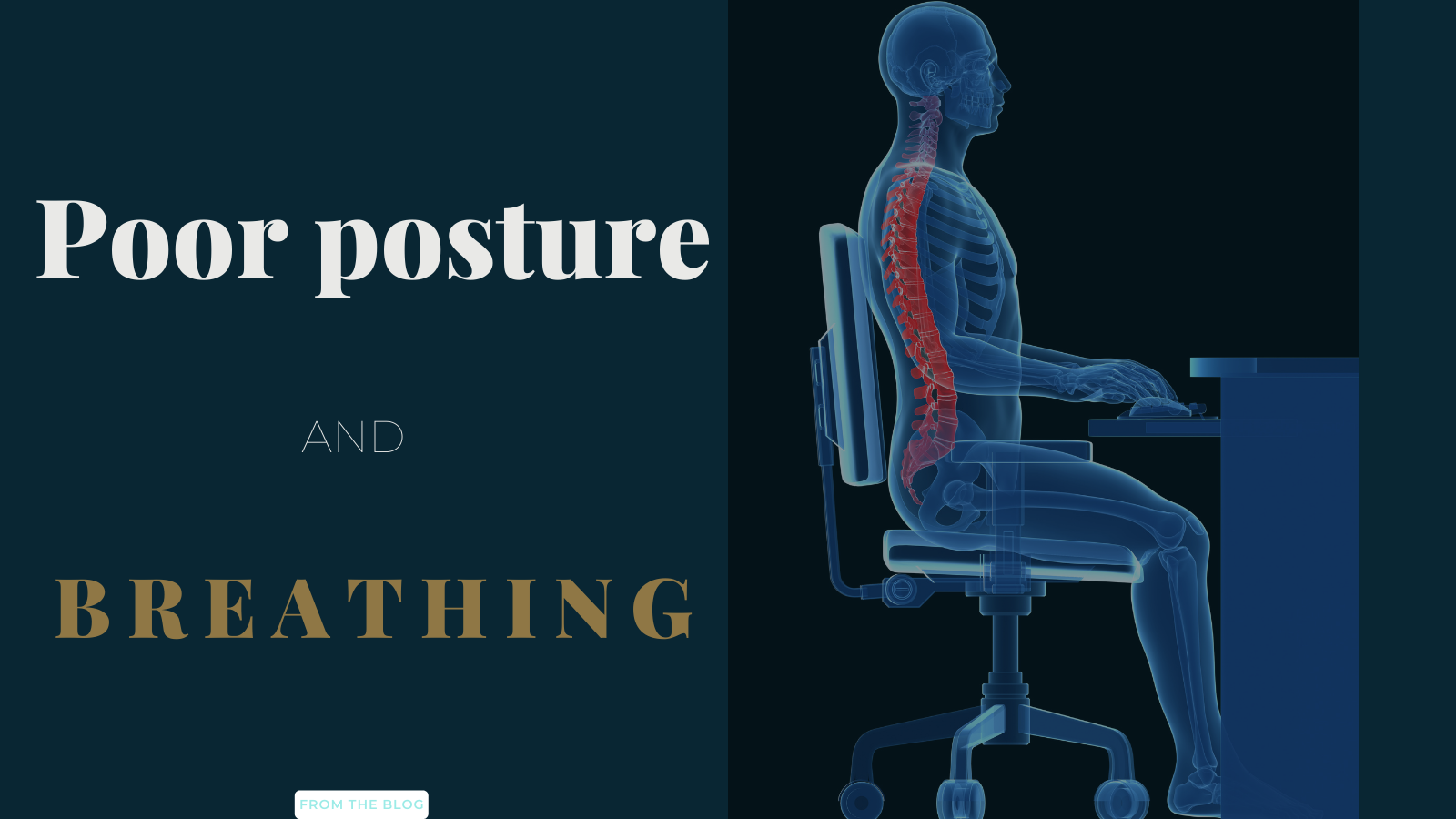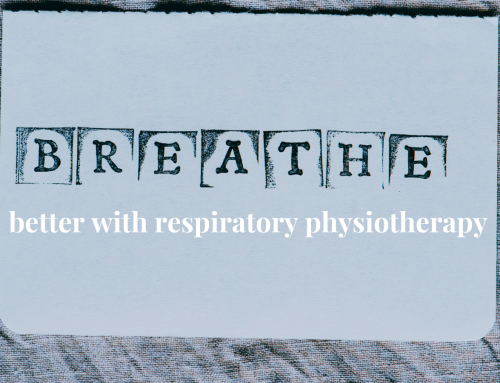Picture this for a moment…
You need to blow up a balloon but someone is holding it firmly between their hands. It’s going to be much more difficult to properly inflate it, isn’t it?! How much and how easily the balloon can inflate is directly affected by the space around it.
You can think of the effect poor posture has on your breathing in exactly the same way!
If your posture is slouched and hunched over, your chest and rib cage will be in a position which is less favourable to your lungs filling with air. This is because the movement of your diaphragm will be limited in this position…
In the slouched position your tummy contents will limit the downwards movement of your diaphragm, limiting the ability of your lungs to fill properly. Remember the diaphragm is the biggest and most important muscle when it comes to breathing.
It’s believed that a forward head posture which is sometimes referred to as ‘text neck’ can reduce lung capacity by as much as 30%.
Now add Breathing Pattern Disorder into the mix…
We’ve spoken about breathing issues, and optimal breathing before, and it’s important to understand that poor posture can have a significant effect on the quality of your breathing.
A slouched posture can encourage overuse of the muscles in the top part of the chest. These muscles may kick in to compensate for the lack of movement at the diaphragm. This can be problematic for those who have a breathing pattern disorder, as overuse of these upper chest muscles leads to an imbalance in normal breathing mechanics and can create symptoms of shortness of breath for example. You can read more about breathing pattern disorders HERE.
Posture won’t be the root cause of a breathing pattern disorder but it most certainly can contribute to it.
Working from home woes
So many people have been thrown into a world of working from home over the last year. Our ergonomically assessed workstations and chairs disappeared overnight, to be replaced with balancing on stools at the kitchen table!
And many people are likely to continue to work from home for a little while longer, perhaps even permanently, so now is the time to make sure your home set up is supporting your posture so you can maximise your comfort and support your optimal breathing.
We recommend:
An ergonomic desk set up
This is all about making sure your workstation is set up in the right position for you. Your screen (whether it’s a desktop or laptop) should be at eye level – you may need to get a stand to achieve this for your laptop. If you’re working on a laptop it’s worth getting a separate keyboard and mouse. You should also sit on an adjustable chair that can be moved up or down to the right height for you.
Taking regular breaks
Sitting in one position for a prolonged period of time can take its toll on your posture. Working from home has exacerbated this problem with many of us moving around even less than we did when we were commuting. Aim to stand up and move around every half hour.
There are a number of different apps you can use to remind yourself to take a break. For example, if you’re a Google Chrome user, you can use the Posture Minder app which will remind you to be aware of your posture on a regular basis!
Neck stretches, pectoralis stretches
While you’re taking your break from the desk, it’s time to do a little stretching! The key stretches to promote good posture are neck and pectoralis stretches.
Neck stretches: there are a couple of exercises you can do to stretch your neck out. The first one is to gently lower your left ear towards your left shoulder; hold for 10 to 15 deep breaths, then repeat on the opposite side. You can also do some neck rotations – slowly turn your chin towards 1 shoulder; hold for 10 to 15 deep breaths, then repeat on the opposite side,
Pectoralis stretch: a good one is the door frame stretch. Simply place your forearm and elbow up against a door frame. Now gently twist your body away from your arm and you should feel the stretch. Moving the arm higher or lower will adjust the area that benefits from the stretch, for example, dipping your shoulder down a little will target higher up in the chest.
Breathing control exercises
Build breathing control exercises into your day. This focuses on relaxed breathing using the lower chest (diaphragm) to ensure your lungs are filling adequately.
- Lie down on your back, make yourself comfortable, and have your head supported.
- Put one hand on the top of your chest and one hand on your lower ribs or tummy. You may have to move your lower hand around as you practice in order to feel movement.
- Keep your mouth closed. As you breathe in slowly and gently through your nose, focus on your lower rib cage moving out to the side.
- your upper chest should not move. If it is, you might be taking too deep a breath!
- Try to perform this for 10 minutes, twice a day
Awareness of breathing pattern
Just being more aware of your breathing pattern will help minimise the risk of poor posture leading to breathing pattern disruption.
Why not aim to check it every hour – you can set yourself an hourly alarm on your smartphone or put a post it note on your computer. Just choose a method that you’re most likely to respond to!





